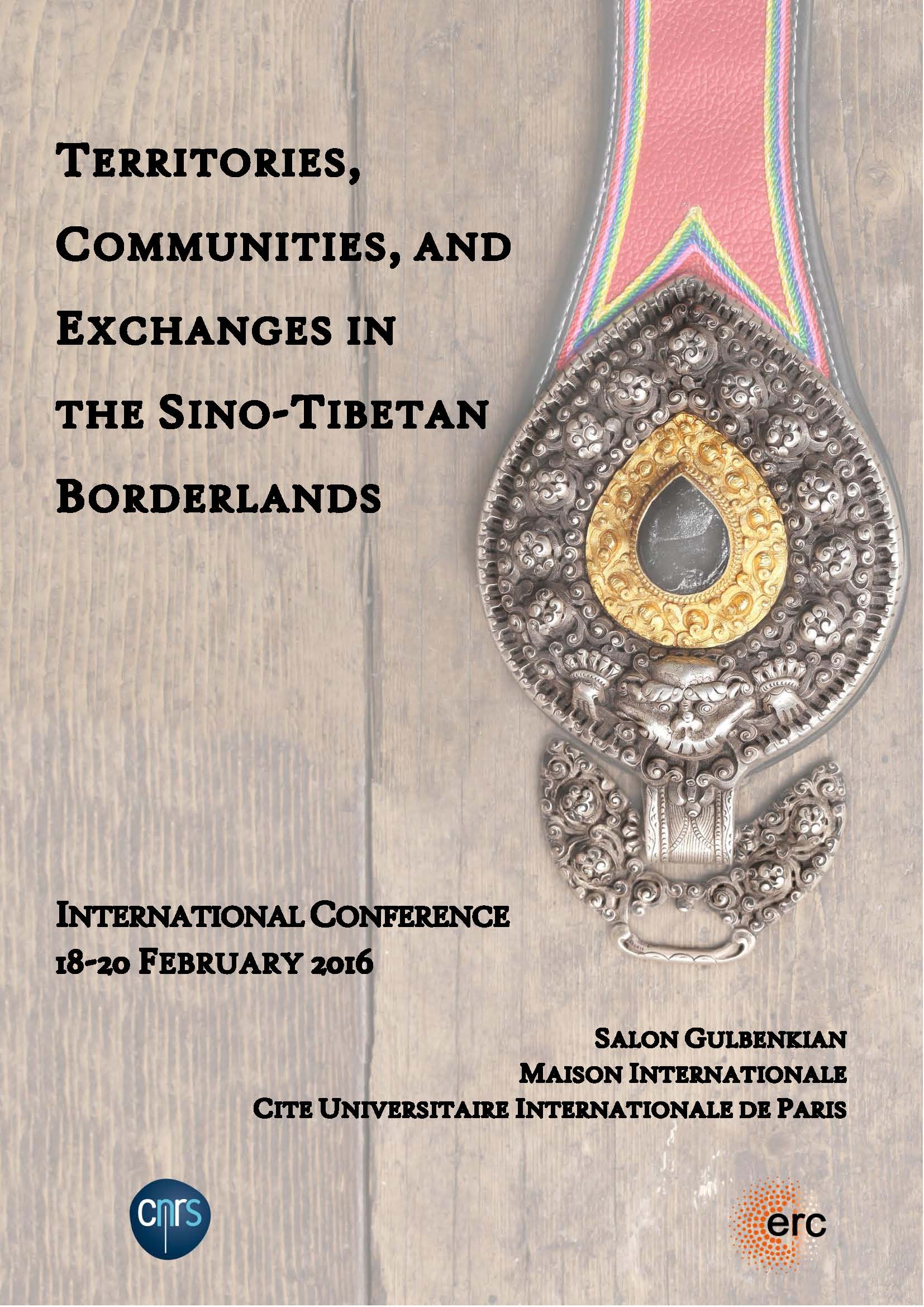Notice
Tenzin Jinba (National University of Singapore), " Two Gyalrong Weddings Under Fire: Rethinking of the Ongoing “Sinicization” and “Tibetanization” on the Sino-Tibetan Borderlands "
- document 1 document 2 document 3
- niveau 1 niveau 2 niveau 3
Descriptif
Two weddings in 2009 and 2015 respectively have received wide publicity among Tibetans and others within and out of China. The first was that of Lobsang Dundrup, a renowned singer from Gyalrong, and his new bride. While his friend posted their wedding photos on her blog, it received sharp critiques from Tibetan netizens for their “un-Tibetan” or “un-Buddhist” behavior since the couple were wearing clothes made of wild animal pelts. The singer was made to apologize in public for his “bad” conduct. The second is that of a young Gyalrong couple working in Chengdu, capital of Sichuan. The images posed as both modern Chinese city and “traditional” Tibetan couples, which had been posted on blogs, wechat and other social media, attracted even much wider attention both home and abroad. While the Chinese newspapers and thousands of netizens were amazed at the refreshing images of “modern” Tibetan youth who were seen to have left their home region physically but manage not to leave their Tibetan spirits behind, many Tibetans and others, notably Tsering Woeser, a highly-profiled Tibetan writer, were deplored at their pseudery or “staged” pretentiousness as heavily Sinicized Tibetans. The accusations of the “un-Tibetan” behaviors of the two different couples shed new light on intense anxiety among Tibetan intellectuals and others that the Gyalrong case foreshadows the diminishing of Tibetan culture and identity at the Sino-Tibetan borderlands and in Tibetan regions in general. This kind of anxiety simultaneously reflects an urge and earnest call for the re-Tibetanizing or re-civilizing of borderland Tibetans by reinforcing Buddhist teachings and Tibetan values. Therefore, this article will look into the symbolic meaning embedded in these two Gyalrong weddings as well as the ongoing conflicts and convergences of the “Sinicization” and “Tibetanization” discourses.
International conference “Territories, Communities, and Exchanges in the Sino-Tibetan Kham Borderlands,” Februray 18-20, 2016. This conference is an outcome of a collaborative ERC-funded research project (Starting grant no. 283870).
For more information, please visit the project's Website: http://kham.cnrs.fr
Dans la même collection
-
C. Pat Giersch (Wellesley College), "Patterns of Inclusion and Exclusion Along Twentieth-Century Ch…
In recent years, increasingly sophisticated work has traced the remarkable changes in early twentieth-century state-building along China's southwestern and Tibetan borderlands. During this same period
-
Lucia Galli (University of Oxford), "The Price of Enlightenment: The Travel Account of Kha stag ʼDz…
Frontier territories characterised by intense socio-economic, political, and cultural inter-actions, in the mid-nineteenth century the easternmost fringes of the Tibetan plateau saw the rise of the
-
John Bray, "French Catholic Missions and Sino-Tibetan Trade: Local Networks and International Enter…
The Missions Étrangères de Paris (MEP) sent their first missionary on an exploratory mission to the Sino-Tibetan borderlands in 1847, and they retained a presence in the region until 1952. Together
-
Mark Frank, " Chinese Physiocracy: Kham as Laboratory for the Agrarian Theory of China "
When a nation-state looks to intensive agriculture for its national essence, what are the implications at the local level? This paper looks at agricultural colonization efforts (tunken屯垦) of the
-
Stéphane Gros (Centre National de la Recherche Scientifique), "Matrifocality and the House in Drapa…
GrosStéphaneThe practice of a non-contractual, nonobligatory, and nonexclusive visiting sexual system among a matrilineal group in Southwest China has generated as much interest in anthropology as in the mass
-
Chen Bo (Sichuan University), “House Society” Revisited "
In this paper, I will begin by considering the concept of “house society” and its applicability to Southwest China. I ask the question of why no scholar, Levi-Strauss included since he originally
-
Eric Mortensen (Guilford College)," Boundaries of the Borderlands : Mapping Gyalthang"
This project seeks to discern the physical and conceptual boundaries of the Tibetan region of Gyalthang, in southern Kham. At issue are questions about the relationships between older
-
Fabienne Jagou, " Manchu Officials’ Khams Travel Accounts: Mapping a Course Through a Qing Territor…
Throughout the Qing dynasty (1644-1911), more and more travelers –officials, military and merchants- went to the Southwest border of China and dedicated some of their time to writing travel accounts,
-
Isabelle Henrion Dourcy (University of Laval), "Making Movies in the Gesar Heartland: The Burgeonin…
This conference is an outcome of the collaborative ERC-funded research project “Territories, Communities, and Exchanges in the Sino-Tibetan Kham Borderlands” This research project focuses on the
-
Elizabeth Reynolds (Columbia University), " Monasteries, Merchants, and Long Distance Trade: The Ec…
Pre-1959 Tibet was not a “closed off land” as is often assumed, but a place of dynamic economic structures and a diverse body of economic actors. The Trehor region, an area located in modern day
-
Yudru Tsomu (Sichuan University), " Rise of a Political Strongman in Dergé in the Early Twentieth C…
This paper discuses rivalry for the throne of Dergé between 1890 and 1940. In the late nineteenth and early twentieth centuries, internecine feuds created a power vacuum serious enough to invite
-
Katia Buffetrille (Ecole Pratique des Hautes Etudes), " The Increasing Visibility of the Borderland…
For centuries, Central Tibet and its capital Lhasa were regarded as the center—as is obviously expressed in the very name of the region in Tibetan, dBus, “Center”—of political and religious life in













